I took the opportunity of a nice afternoon yesterday to harvest the leeks remaining in the garden. I had piled up leaves around them to prevent them from freezing. I could have left them in a while longer, but with rains today and tomorrow, to be followed by some very cold nights, now was the time to get them out of the ground.
I used my CobraHead Long Handle to clean away the leaves packed around the leeks. It works well for that task, much easier than trying to use a rake or scraping them out by hand. The soil was quite soft under the leaves. If the soil were bare, it would have been frosted. The insulating properties of the leaves really make a noticeable difference.
A garden fork made it easy to the lift the leeks out without doing any damage. While I had lots of nice fat ones and many long stems, they weren’t uniformly perfect. Next year, I’m going to follow advice from Eliot Coleman that I learned in a talk of his I attended. In his greenhouses, he uses a specially designed one inch diameter dowel as a dibble and makes a nine inch deep hole. He puts a pre-sprouted leek in each hole, but does not fill the soil back in. He lets the soil in the holes fill itself back in as the holes are watered and naturally collapse. This method produces uniform long stemmed leeks and I can’t wait to try it.
Here are the leeks ready to be cleaned. This final harvest represents about one quarter of the leeks we’ve harvested from one bed this year.
Normally I would wash them outside after cutting off most of the root, but as it was just above freezing and I’ve already put the hoses away for the winter, I just cut off the roots and most of the leaf material.
Here is the almost finished product. The final preparation is to clean off any bad ends and dark green leaves, saving only the white and light green parts.
We cut the leek through most of the length, leaving the root portion intact and wash any dirt that may be between the layers. These leeks will be frozen. Prep from here is merely to dice and put in freezer bags. Frozen, they are ready for soups, stir fries and sautés.
Leeks are easy to grow, their culture is pretty much the same as onions. They almost never have any disease or bug problems and most good cooks consider them an essential vegetable.

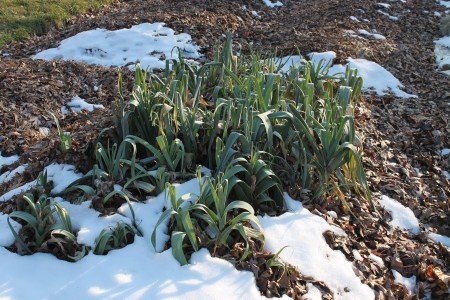
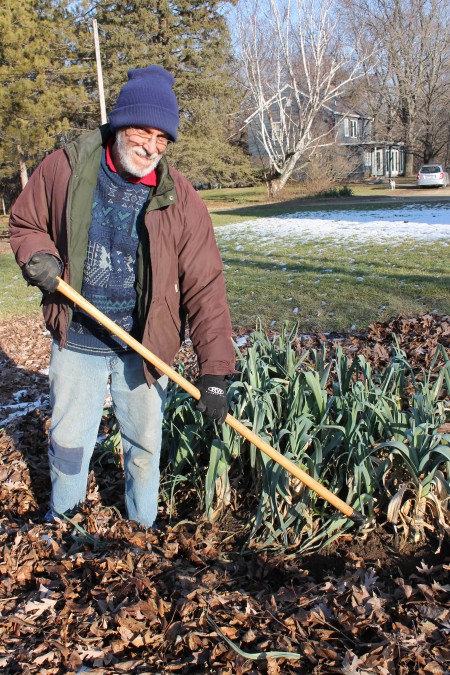
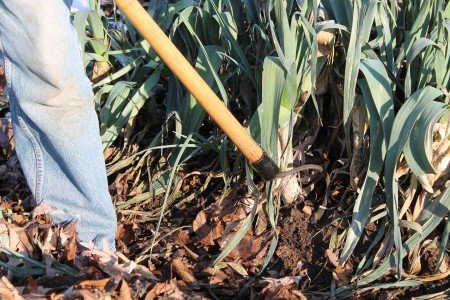
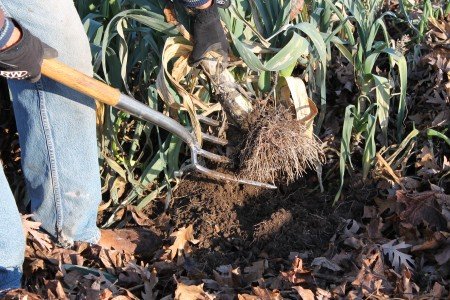
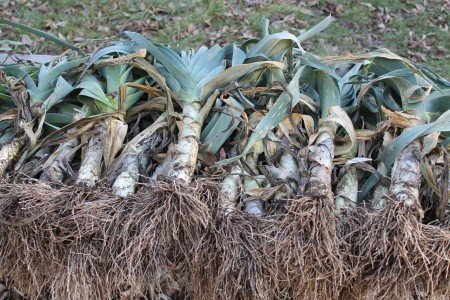
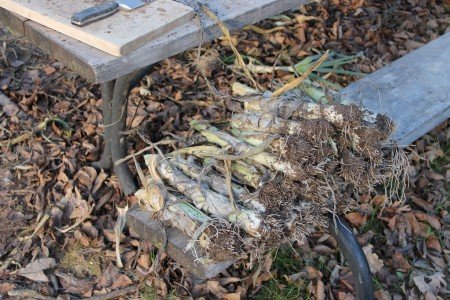
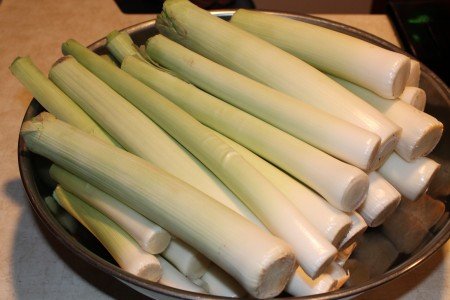
Great article on leeks. I had good success thie past year, my first. But I need to get them longer. Tried t- plant deep and then hilled a little but no that much. According to that Eliot Coleman method, how long are the pre-sprouted leeks that go into those 9 inch deep holes? I grew mine in a seed flat until they were about 4-6 inches tall above the ground but didn’t plant them anywhere near 9 inches deep. Can’t quite picture dropping them into a 9 inch deep hole.
Paul, here’s the link to Elliot Coleman’s’ book on The Winter Harvest and his description of his leek planting tool. I had no problem getting my leeks started in a flat getting well over 10″ long. You need only to have enough leaf sticking out of the hole so the plant isn’t smothered, but you don’t need much more as you don’t fill the hole back in, it just fills itself gradually. I had my leeks pretty deep this year, but I did not use this tool, which I will try next year.
Thanks! Those details from Eliot Coleman really help. I know exactly how I’ll do my 2013 leeks, now
I am an amateur at raising edibles so I found your post very informative Having some success is a great part of continually trying new things so thank you.